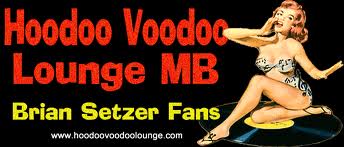Well, to really understand what effects do to a guitar, it helps to understand the basics of how an electric guitar and amplifier work to produce sound. Now I be' simplifying things a bit here (Bear85 can probably put it better as he's a physics teacher), but the basics of how an electric guitar works is this. You play a note(s) on the fretboard causing the string(s) to vibrate which generates a vibrating wave that creates a changing magnetic field at the pickups which induces a voltage (signal) that gets sent to the amplifier. The amplifier, then, utilizes a combination of electric circuitry (diff. combinations of vacuum tubes, transistors, potentiometers, resistors, capacitors, diodes, etc.) to amplify (pre-amp and power amp) the signal, ultimately producing something loud enough to physically drive a speaker(s). The speaker, then, converts the electrical signal back into a physical vibration that is transmitted as a sound wave (music).
Effects come somewhere between the guitar and pre-amp. input, although they can be incorporated later if your amp. has an effects loop. Personally, I take the Setzer approach and don't use that many effects. I think that too many pedals can ruin your sound, but that's a matter of personal taste and depends on what equipment you use. What type and how many effects you use will also depend on the styles of music that you play. I mainly use the following in my gear: Boss RE-20 Space Echo, Dunlop Crybaby Wah, Heil Talk Box, and Zoom multi-effects processor/tuner (sometimes, for everything else not covered by the 1st four). I don't typically use distortion pedals as I like to get distortion directly from the amplifier, but some good ones out there are the Boss MT2 Metal Zone for metal and hard rock applications and the Ibanez Tube Screamer for blues and classic rock.
Boss RE-20 Space Echo:
This modulates your signal to produce an echo effect with or without reverb. Basically what this does is add a variable echo delay to your sound which gives you that slapback effect. This pedal has been discussed quite frequently on this forum and the old one, and, again, here's my thoughts on it. If you're looking at this pedal to accomplish the pre-amp gain boost that the RE-301 does for Setzer's tone, you won't find it. However, if you're looking to replicate the BSO or Stray Cats Echo effect without worrying about the Bassman distortion, then this pedal comes pretty close. Now is it as good as an old analog echo unit? Well, maybe not, but I think it's pretty close without the hassle and maintenance worries of a vintage unit. I've tried some of the other units out there, but this one worked for me. It also can create alot of other spacey-type sounds besides regular slap-back echo (e.g. Robby Kreiger's solo tone from the Doors'
When the Music's Over) and that is another plus for the unit.
Dunlop Crybaby Wah:
This modulates your tone by filtering high or low frequencies to produce the crying "wah" effect. You hear this used on everything from Classic Rock to Metal to Big Band Classical. It's a very versatile effect and it can be very expressive when used. There are many brands and models out there depending on your preferences.
Heil Talk Box:
This interrupts your signal path and diverts part of the sound up a tube to a microphone and part of it to an external speaker (2nd amp.). You play notes on the guitar, but mimic them and/or harmonize them with your voice resulting in an effect like the wah pedal, but more pronounced. Again this has been a popular choice over the years as many people from Aerosmith, Joe Walsh, Metallica, Bon Jovi, and others have used it, although Peter Frampton is the all-time master of this effect.
Zoom multi-effects processor/tuner:
This provides an inline tuner as well as typical multi-effects in one unit. None of the effects by themselves are overwhelming, in fact for most there are better options elsewhere (i.e. distortion, wah, etc.), but for that one song that calls for an octave up/down harmony, fuzz, or some other basic effect, sometimes it's easier and less expensive to use a multi-effects processor.
One other thing to keep in mind is that effects can be either analog or digital. Your guitar signal is analog, so digital effects employ converters to transform your signal back and forth between the analog and digital realms. Which is the best (analog or digital) for a certain situation depends on alot of factors including cost, sound, features, etc.
Also, alot of manufacturers have video demos of their effects on their respective websites, so you might want to check them out. Here's the one for the RE-20:
RE-20 Video DemoHope that be of some help to ye.
Capt. Jones
